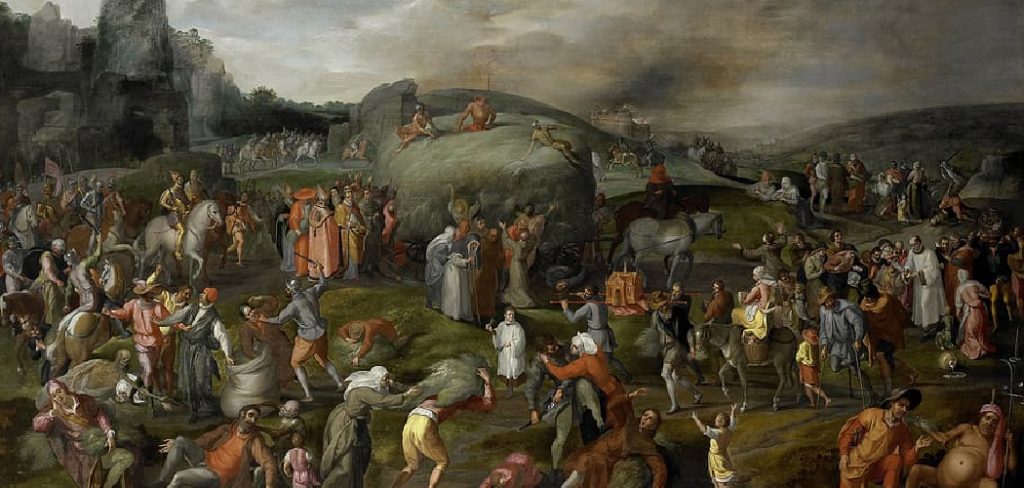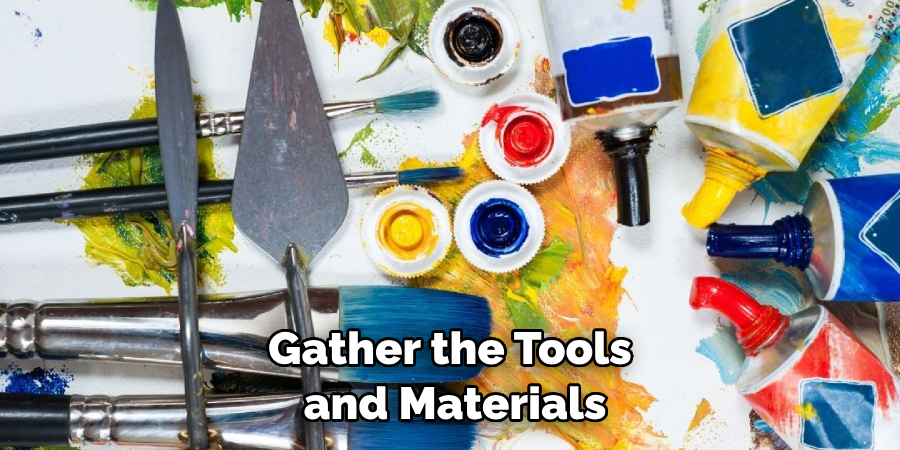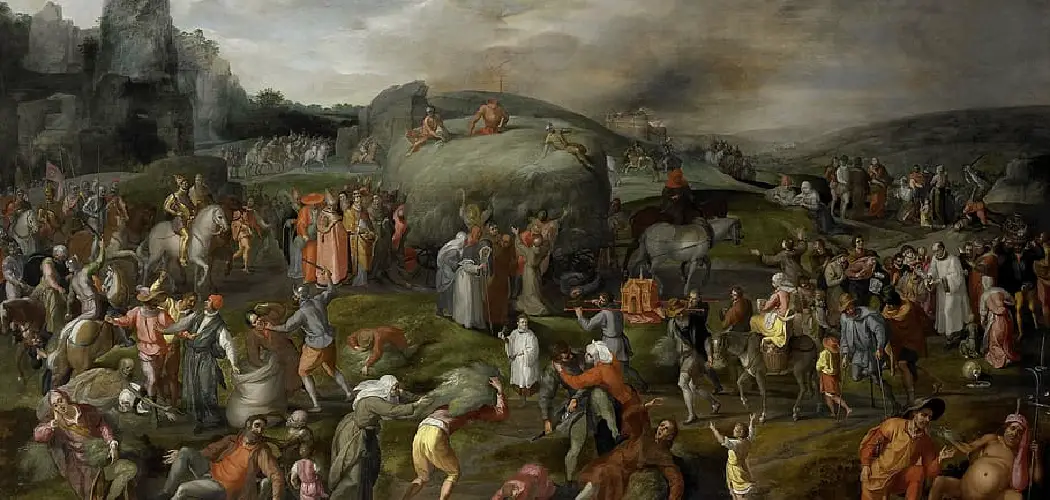Painting on a large canvas can be an intimidating experience, especially if you’re just starting out! But with the proper knowledge and tools at your disposal, creating artwork on a large scale can be rather invigorating and satisfying.

Here, we discuss various tips that will help get you started painting a larger-than-normal canvas – from choosing the right supplies to developing the perfect color palette- so that artists of all skill levels can take advantage of this exciting medium!
If you’re ready to take your art visions to the next level, then look no further than painting a large canvas! This medium of expression provides an opportunity for artists to create intricate works of art with remarkable detail.
Learn how to make a big statement with painting a large canvas in this informative guide. Here, we’ll cover everything about how to paint a large canvas! Get ready – soon you’ll be creating masterpieces that will hang proudly on walls or stand proud as freestanding statements in any room.
Why May You Want to Paint a Large Canvas?
1. To make a statement
Large canvases are great for making a bold statement in any room of your home. Whether it is a painting, illustration, or photograph, the larger size will be sure to garner attention and admiration from visitors. Also make sure to use the right colors and textures in your painting, as this can help add life and make a large canvas even more eye-catching.

2. To Create an Immersive Experience
When working with a large canvas, you have the opportunity to create something that will completely immerse your viewers in your artwork. Using bold colors, interesting compositions, and creative techniques, you can make a painting that will capture the attention of those who pass by and keep them engaged.
3. To Practice Your Technique
Finally, working with a large canvas allows you to experiment and practice your painting technique without having to worry about making mistakes. As the surface area is much larger than when working with a smaller canvas, it gives you more room for trial and error. So don’t be afraid to get creative and practice different techniques until you find the one that works best for you!
There are many benefits to painting a large canvas, but it is important to remember that it can be a time-consuming project. Make sure to plan ahead and set aside enough time in order to complete your masterpiece with the utmost care and attention.
By taking the time to properly plan and execute your project, you will be sure to create a stunning large canvas painting that will look great in any home.
How to Paint a Large Canvas in 6 Easy Steps
Step 1: Gather All The Tools You Will Need
The very first step is to gather the tools and materials you will need for your painting. This includes things like a large canvas, paintbrushes, paints, a palette or paper plate for mixing colors, rags or paper towels, and any other items you may need such as an easel or drop cloth.

Step 2: Prime The Canvas
Before starting your painting project it’s important to prime the canvas. This will help create an even surface for your paint and will also keep the colors from seeping into the canvas fabric. Use a gesso primer or white acrylic paint to coat the canvas evenly and let it dry completely before continuing.
Step 3: Sketch Your Design
Once your canvas is prepped, you can begin sketching out your design. You can use a light pencil to draw the basic outlines of your painting, and then you can use charcoal or pens to create more defined details.
Step 4: Start Painting
Once your sketch is complete, it’s time to start painting. When working with large canvases, it’s best to start with the background colors first and build up from there. Use thin layers of paint to build up the colors gradually.
Step 5: Keep Building Up Layers
As you continue painting, keep building up layers until your painting is complete. You may also want to add details like glazes or highlights for texture and depth.
Step 6: Let Your Painting Dry Completely
The last step is to let the painting dry completely before you move it. Once the painting is dry, you can touch up any areas that may need additional attention and let your masterpiece shine! Make sure to keep your painting in a safe place away from direct sunlight or moisture.

Some Tips to Paint a Large Canvas
1. Do Not Be Intimidated
It might seem intimidating to paint a large canvas but don’t let that stop you from creating something special. Just remember that you can always start small and work your way up! Also make sure that you choose a canvas size that is manageable and not too big.
2. Gather Your Materials
Before you start painting, make sure to have all your materials gathered together. This includes paint, brushes, primer, and other tools necessary for the project. If you are using acrylic paints, it is important to get quality materials so that the colors will be vivid and last for years.
3. Avoid Overworking the Canvas
When painting a large canvas, it is important to remember not to overwork the surface. This can lead to an uneven finish and detract from your artwork. Instead, focus on creating broad strokes and using light colors for backgrounds. Once you have laid down the foundation of color, then you can start adding details and highlights.
4. Use Color Blocking
Color blocking is a great way to create an interesting look on a large canvas. This involves painting blocks of color in a variety of sizes, shapes and colors to create visual interest. You can also use this technique to accentuate certain parts of the artwork or make areas stand out more.
5. Take Breaks and Be Patient
When working with larger canvases, it is important to take breaks and be patient. Painting can sometimes be tedious and tiring, so make sure to give yourself time to rest and refresh your mind before continuing with the project. It’s also important to remember that great art takes time; don’t rush through the process just to get it done quickly.
With patience and dedication, you can create beautiful works of art on large canvases. Just remember to keep these tips in mind and you’ll be well on your way to completing a stunning painting! Good luck!
Frequently Asked Questions
What Precautions Should Be Taken When Painting a Large Canvas?
When painting a large canvas, be sure to wear protective clothing and goggles or glasses to shield your eyes from paint fumes and particles. Make sure you are in a well-ventilated area and that the surface you are working on is secure and free of obstacles. It’s also important to use high-quality materials, such as brushes, paints, and canvases.

What Should I Use to Paint a Large Canvas?
Acrylic paint is the best choice for large canvases, as it dries quickly and covers large areas easily. If you’re looking for something more permanent, oil-based paints may be the better option. However, they require more time to dry and often need to be blended with other colors for the desired effect.
What Is the Best Way to Hang a Large Canvas?
The best way to hang a large canvas is by using heavy-duty picture-hanging hardware, such as nails, screws, and anchors. For extra security, use two or three brackets along the length of the canvas.
Be sure to measure the distance between each bracket and use a level to ensure your canvas is hung correctly. Once the hardware is installed, hang the painting from its brackets or wire. Finally, secure it with museum wax for extra protection.
Can I Paint a Large Canvas on a Wall?
Yes, it is possible to paint a large canvas directly on the wall. However, you should make sure that the surface you are painting on is clean and dry before beginning. You may also need to apply a coat of primer or gesso before starting your artwork.
Additionally, since this is an irrevocable project, you should plan out your design beforehand and be sure to measure the area carefully. Finally, make sure to use high-quality materials that will stand the test of time.
Conclusion
What a wonderful feeling it is to create a stunning piece of art with your own skills and abilities! With the appropriate tools, know-how, and techniques, painting a large canvas can be an inspiring and memorable experience. You may find that you want to experiment with different colors or styles as you go along, allowing you to appreciate the creative sides of yourself more fully.
Now you know how to paint a large canvas! Remember, it’s important to take your time when painting your canvas; trying something new doesn’t always mean it has to happen quickly. As long as you keep yourself organized and followed the steps we outlined in our blog post today, you’re sure to produce a masterpiece worth celebrating. So grab some supplies and get started!

